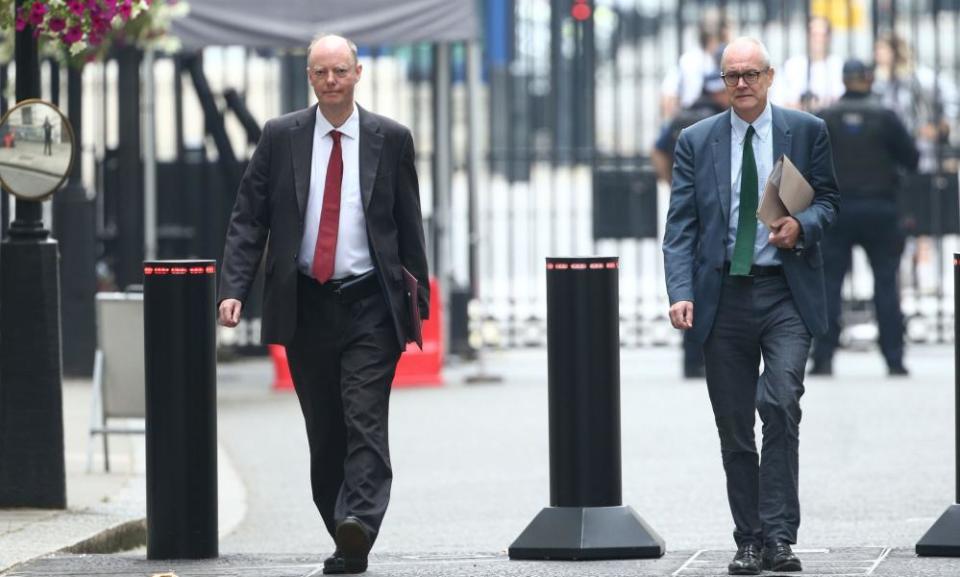Can the UK avoid 50,000 Covid-19 cases a day?

One one point, everyone agrees: the UK is at a turning point.
After a summer of crowded beaches and pubs reopening, followed by children returning to school and employees going back to the workplace, new cases of Covid-19 are definitely on the rise.
In the starkest scenario, laid out by professors Patrick Vallance and Chris Whitty on Monday, the UK could be headed for almost 50,000 cases a day in less than a month, leading to more than 200 deaths a day by mid-November.
Their calculation is a simple one: there were 3,105 new cases on 15 September. If cases were to rise exponentially – leading to four “doublings” between now and mid-October – there would be 49,680 new cases on 13 October. This would put the UK among the worst countries in the world – alongside India, the US and Brazil – for reports of new cases of the virus.
But can we trust these figures – are 50,000 cases a day plausible?
This is hotly contested.
One of the biggest challenges in assessing the prevalence of the virus is testing. As was the case during the first wave, without a comprehensive and timely testing regime we have no clear way of knowing how many new cases there are.
While a range of possible interventions means it isn’t inevitable the UK will see 50,000 cases by mid-October, there are a number of indications that things are heading the wrong way.
Hospital admissions are now doubling every eight to nine days. And even though we are starting at a low base (there were 205 new Covid admissions on Friday in England compared with 3,099 new patients admitted in just one day at the peak on 1 April) this is data with an inevitable outcome: more hospitalisations leads to more deaths.
We can also learn from what is happening elsewhere. In Spain and France an increase in cases has led to a rise in deaths. Spain’s seven-day average case rate is currently 26 per 100,000, while in France the figure is 15 per 100,000, both higher than the UK, where the seven-day average is five per 100,000.
We also know from the first wave cases can rise quickly, take time to fall and, even with sweeping interventions, stemming the spread of the virus takes time.
When the lockdown was introduced on 23 March there were 967 cases and 206 deaths in the UK. However, the increase in new cases continued until mid-April, when the seven-day average peaked at 5,195, and given limited testing capacity at the time that figure could have been far higher.
Ten days later the daily death toll hit 1,000, marking the start of a 22-day run of more than a thousand deaths per day.
However some experts think it is unlikely that the UK will reach the 50,000 figure. Dr Daniel Lawson, senior lecturer in statistical science in the school of mathematics at the University of Bristol, said the simple extrapolation from the current reproductive rate of Covid-19 was not likely to be accurate over a timescale of weeks.
Related: Covid lockdowns in four more areas of Wales as cases rise
“The number is plausible if the UK as a whole does not respond to the outbreak, but an increase in compliance and risk avoidance will make it unlikely to come about as predicted. Additional local or national interventions will also reduce the infections.”
“In other words, the scenario is unlikely to come about – but we do need to pay attention to it anyway, because the public do need to take action to lower the infection rate and only some of this is achieved by policy; the rest is done by us. If we ignore this scenario, it could yet come about, or worse restrictions put in place instead.”
The latest seven-day average shows there were 3,679 new cases a day in the UK. One in five people – almost 14 million – in the UK currently face some kind of restrictions or will from 22 September. What we choose to do in the coming days and weeks will have an amplified impact in months ahead.

